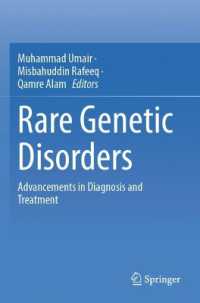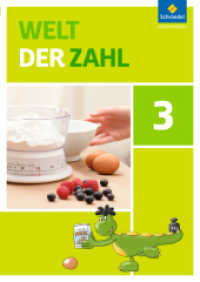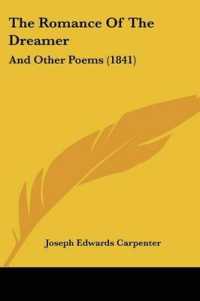基本説明
Deals with the visual elements of art, their properties and how they are related, and especially about how children's knowledge of each can be developed through simple but creative activities.
Full Description
In any area of the curriculum, children need to learn concepts, facts and skills through first-hand experience. In art, such learning depends on exploring and experimenting with the visual language through which artists communicate, and the visual elements such as line, colour and shape.
The National Curriculum places strong emphasis on experimenting with and applying the visual elements. This book systematically explores the basic knowledge needed to do this effectively. The author deals with the visual elements of art, their properties, how they are related, and especially with the ways in which children's knowledge of each can be developed through simple but creative activities. Each element is placed in context, with extensive cross-referencing. The author shows how these elements can be observed in the children's environment and provides examples of how they have been used in works of art and craft.
This accessible book does not assume any specialist knowledge or experience. It is essential for teachers at primary and secondary levels, art co-ordinators and for undergraduate and postgraduate level students of art education.
Martin Wenham is an artist, calligrapher and stone carver who has exhibited at the Craft's Council. He has taught at the University of Leicester and has over twenty years' experience of teaching in primary and secondary schools.
Contents
PART ONE: ART AS EXPLORATION
Investigating, Making and Responding to Art
Visual Language and The Visual Elements
Learning Through Investigation of the Visual Elements
Building on the Foundations
PART TWO: POINT
The Concept of Point
Investigating Points and their Potential
Point In Context
PART THREE: LINE
The Concept of Line
Investigating Line
Some Starting-Points
Developing Line
Line in Context
PART FOUR: TONE
The Concept of Tone
Investigating Tone
The Perception of Tone
Tone in Context
PART FIVE: MIXING AND CONTROLLING COLOUR
The Concept of Colour
Colour Mixing
Tints and Shades
Optical Colour Mixing
Colour Range and Mixing in Context
PART SIX: PERCEIVING AND OBSERVING COLOUR
Colour Constancy and Colour Interaction
Finding, Matching and Mixing Colours
Perceiving Colour in Context
PART SEVEN: RESPONDING TO COLOUR
Responses to Individual Colours
Colour Groupings and Responses to Them
Colour Responses in Context
PART EIGHT: SHAPE
The Concept of Shape
Interaction of Shapes
Investigations of Shape
Shape in Context
PART NINE: SPACE
The Concept of Space
Objective Space
Figure and Ground
Illusory Space
Objective Space in Context
Illusory Space in Context
PART TEN: FORM
The Concept of Form
The Visual Properties of Form
Investigating Form
Moving into the Third Dimension
Form in Context
PART ELEVEN: TEXTURE
The Concept of Texture
Tactile Texture
Visual Texture
Texture in Context
PART TWELVE: PATTERN
Concepts of Visual Pattern
Rotating and Linear Patterns
Investigations of Surface Pattern
Space-Dividing Patterns
Pattern in Context








